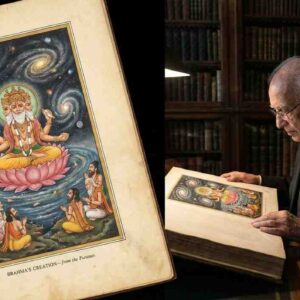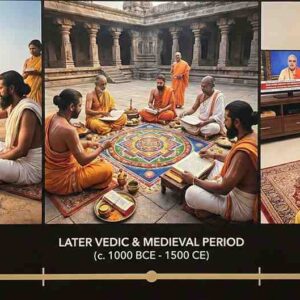India’s rich cultural and intellectual heritage owes much to its ancient scriptures, theVedasand theShastras. These two categories of texts, though interrelated, serve distinct purposes. While the Vedas embody spiritual knowledge and cosmic truths, the Shastras offer practical guidelines and philosophical insights for living an ethical and organized life. Understanding their differences is essential to appreciate their unique contributions to Indian thought.
The Vedas: Eternal Knowledge and Cosmic Truths
The Vedas, regarded asShruti(that which is heard), are considered divine revelations passed down orally before being codified in Sanskrit. Comprising theRigveda,Yajurveda,Samaveda, andAtharvaveda, these texts are seen as the foundation of Hindu spirituality and metaphysical understanding.
Key Characteristics of Vedic Wisdom:
- Cosmic Orientation: The Vedas focus on universal truths, creation, and the relationship between the human and divine realms.
- Ritualistic Core: They provide instructions for yajnas (sacrifices) and other rituals to maintain cosmic harmony.
- Timeless Authority: The Vedas are considered eternal and unchanging, embodying the ultimate source of spiritual wisdom.
- Universal Principles: They explore profound questions about existence, truth (Satya), and the interconnectedness of life.
For instance, theRigvedaextols the power of nature through hymns dedicated to deities like Agni (fire) and Indra (rain), illustrating humanity’s reverence for natural forces.
The Shastras: Practical Guidelines and Philosophical Insights
The Shastras, categorized asSmriti(that which is remembered), serve as interpretative texts that build upon the Vedic foundation. These include theDharma Shastras(ethical laws),Arthashastra(governance),Natyashastra(aesthetics), and more. They adapt Vedic principles into practical and contextual frameworks.
Key Characteristics of Shastric Teachings:
- Contextual Relevance: The Shastras evolve with time, addressing societal needs and challenges.
- Practical Application: They provide ethical guidelines, governance strategies, and cultural insights.
- Philosophical Depth: Texts like theNatyashastradelve into aesthetics and emotions, blending art with life.
- Human-Centric: While the Vedas focus on the divine, the Shastras emphasize human behavior, societal order, and governance.
For example,Kautilya’s Arthashastra, written around 300 BCE, remains a cornerstone in understanding statecraft, economics, and military strategy.
Comparing Vedic Wisdom and Shastric Teachings
| Aspect | Vedic Wisdom | Shastric Teachings |
| Nature | Divine revelations (Shruti), eternal and universal. | Codified human interpretations (Smriti), evolving over time. |
| Focus | Spirituality, rituals, and cosmic truths. | Practical guidance on ethics, governance, and cultural life. |
| Purpose | To connect humanity with divine forces and maintain cosmic order. | To provide actionable solutions for societal and individual challenges. |
| Authority | Infallible and timeless, considered the ultimate truth. | Adaptable, shaped by human reasoning and cultural shifts. |
| Examples | Rigveda, Yajurveda, Samaveda, Atharvaveda. | Arthashastra, Manusmriti, Natyashastra, Dharma Shastras. |
How Vedic and Shastric Knowledge Intersect
While the Vedas and Shastras have distinct purposes, they complement each other in shaping a holistic worldview. The Vedas provide the metaphysical foundation, while the Shastras translate these principles into actionable frameworks for governance, ethics, and the arts.
For instance, theManusmriti, a Dharma Shastra, interprets Vedic principles to outline societal roles and responsibilities. Similarly, theNatyashastrablends spiritual and philosophical concepts to create a framework for artistic expression.
Relevance in Modern Times
Both the Vedas and Shastras continue to inspire contemporary thought and practices:
- Vedic Teachings: Modern environmental ethics draw from Vedic reverence for nature, as seen in principles like ecological balance and sustainability.
- Shastric Insights: Governance and economic strategies from the Arthashastra influence modern policymaking and management.
TheNational Education Policy (2020)emphasizes integrating traditional knowledge systems, ensuring that these texts remain relevant for addressing contemporary challenges.
Conclusion: Two Pillars of Wisdom
The Vedas and Shastras represent two complementary paths to understanding life and existence. While the Vedas offer spiritual and cosmic insights, the Shastras provide practical tools to navigate the complexities of human life. Together, they form a comprehensive framework that continues to guide individuals and societies in their pursuit of truth, harmony, and progress.
By exploring the interplay between these two traditions, we gain a deeper appreciation of India’s profound intellectual legacy.












